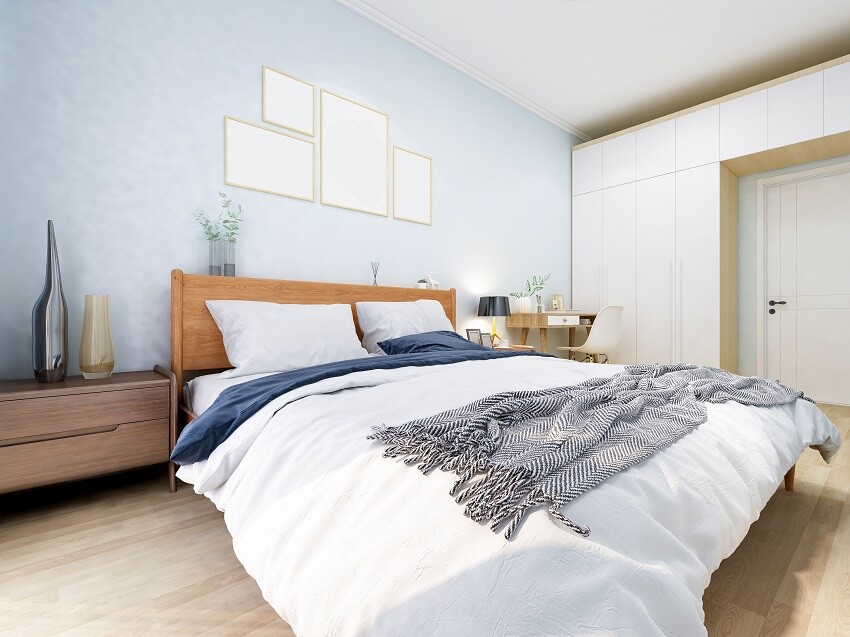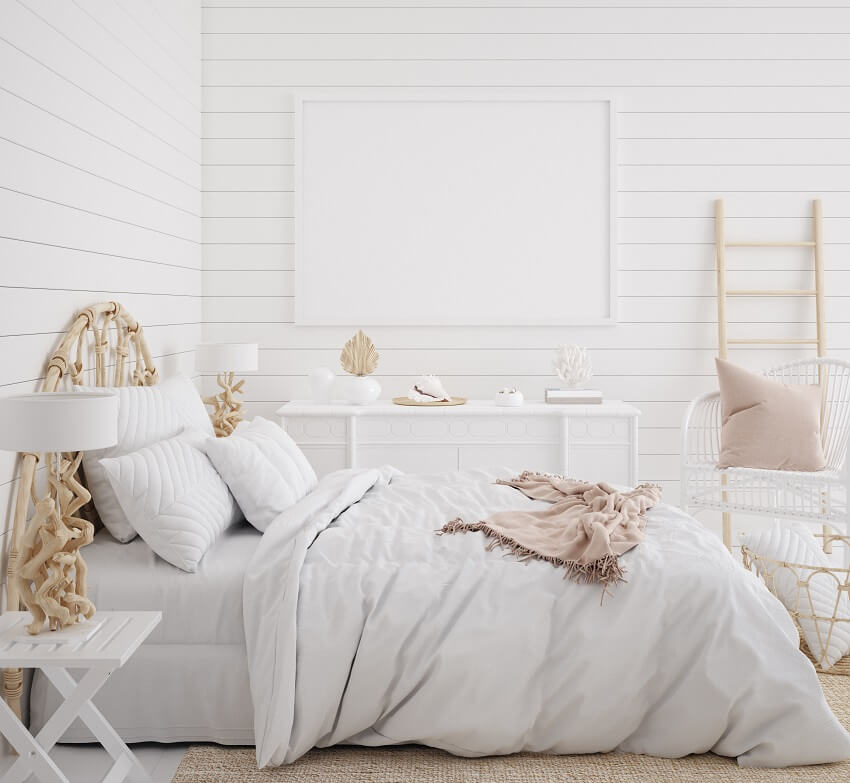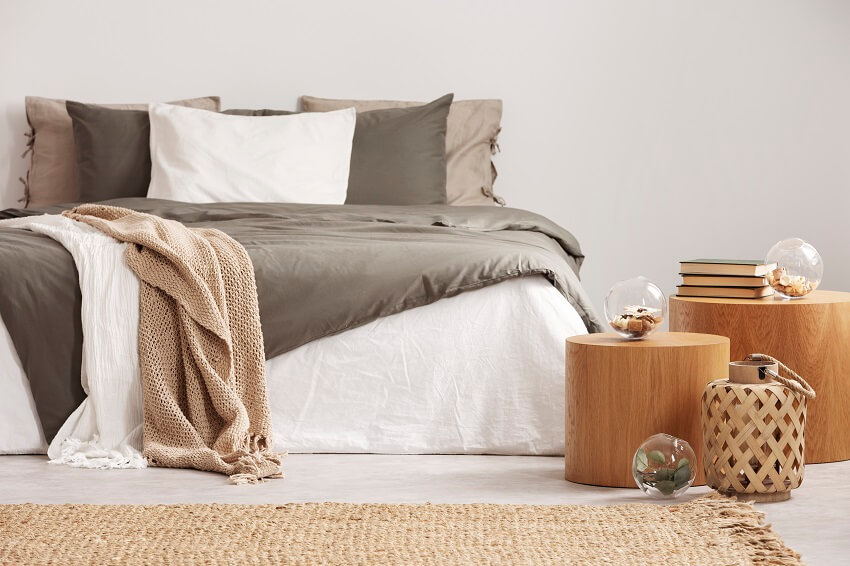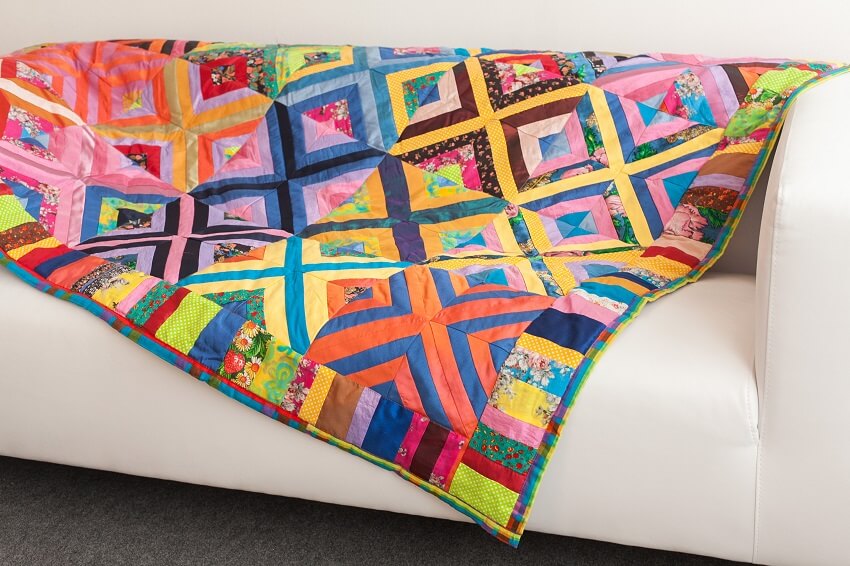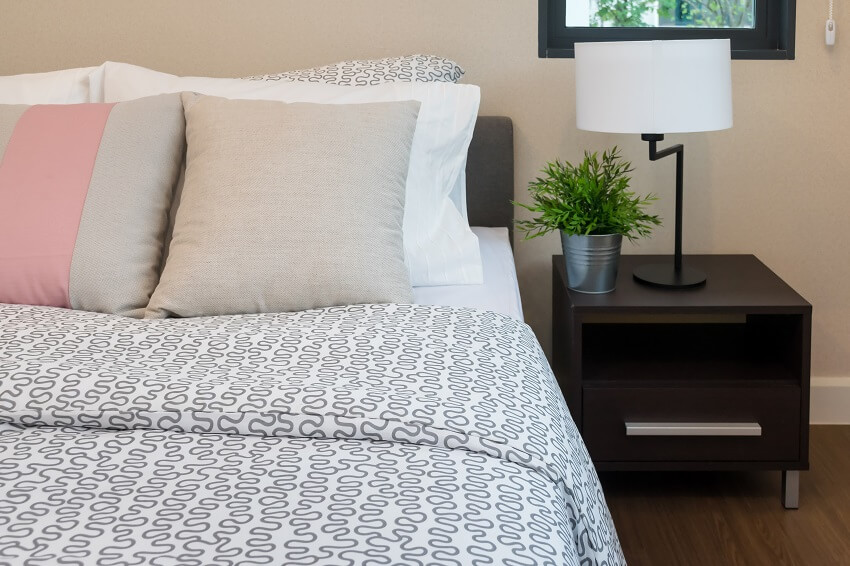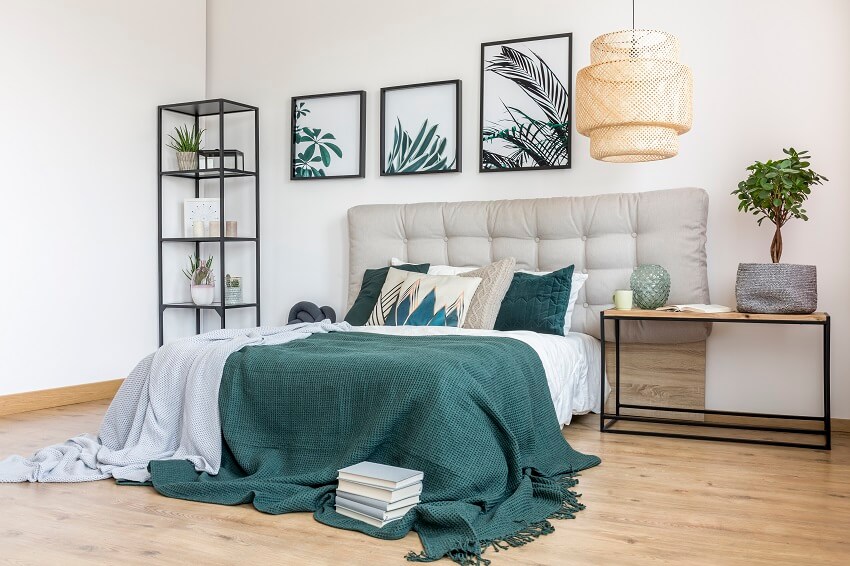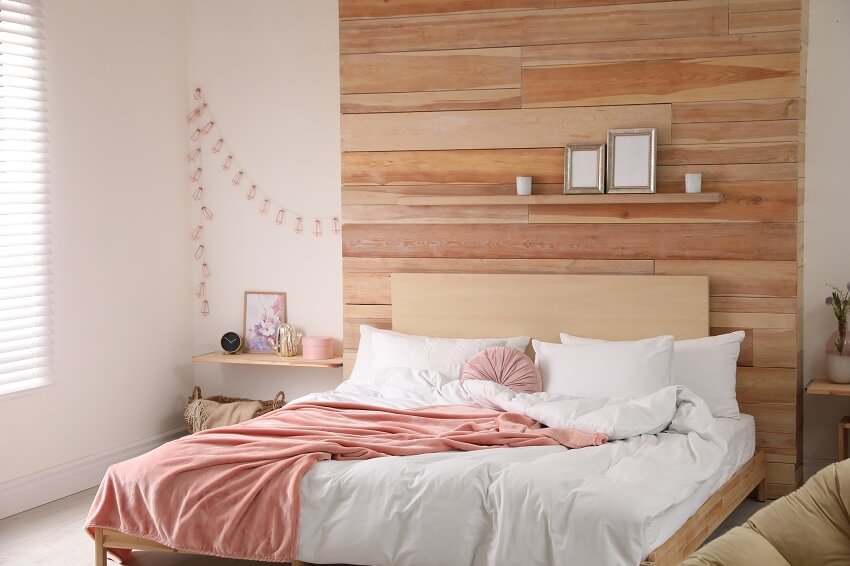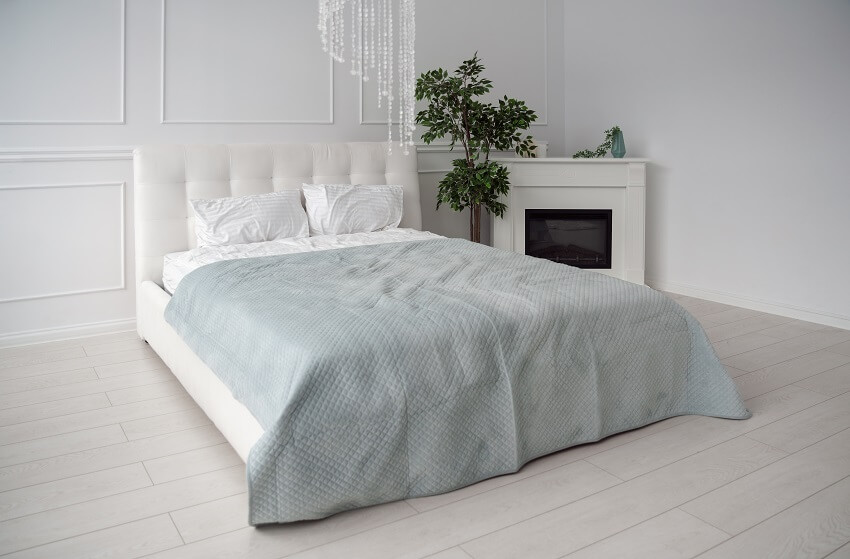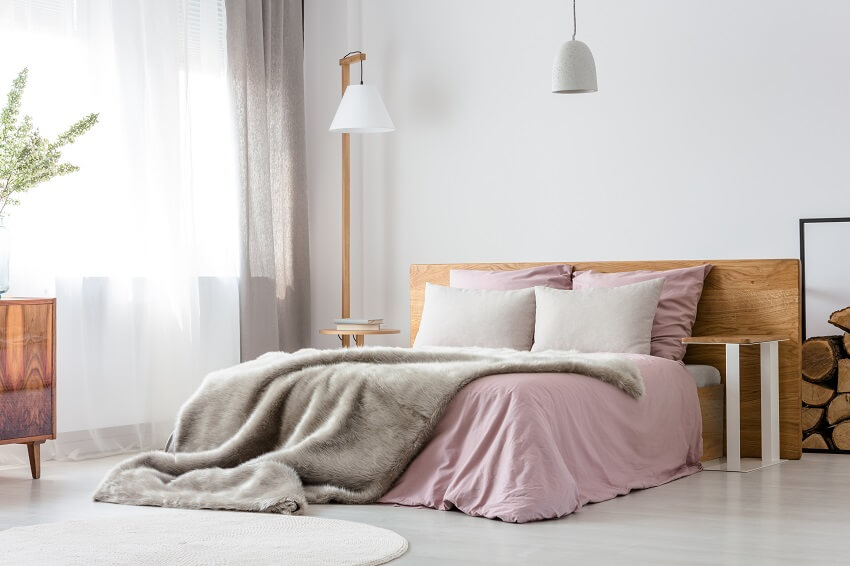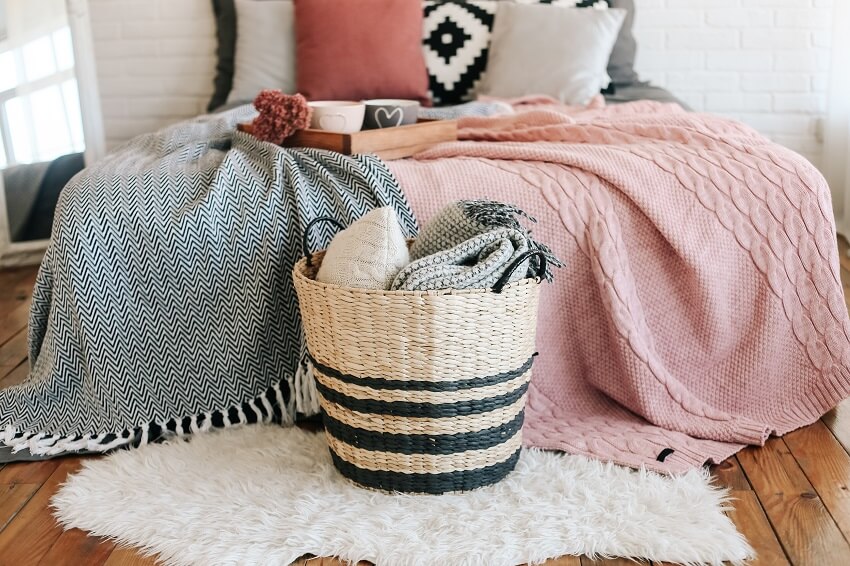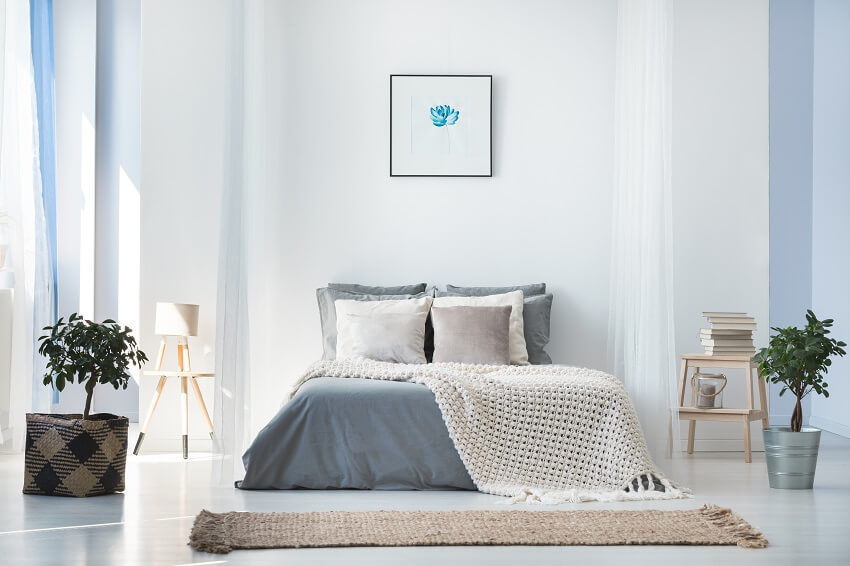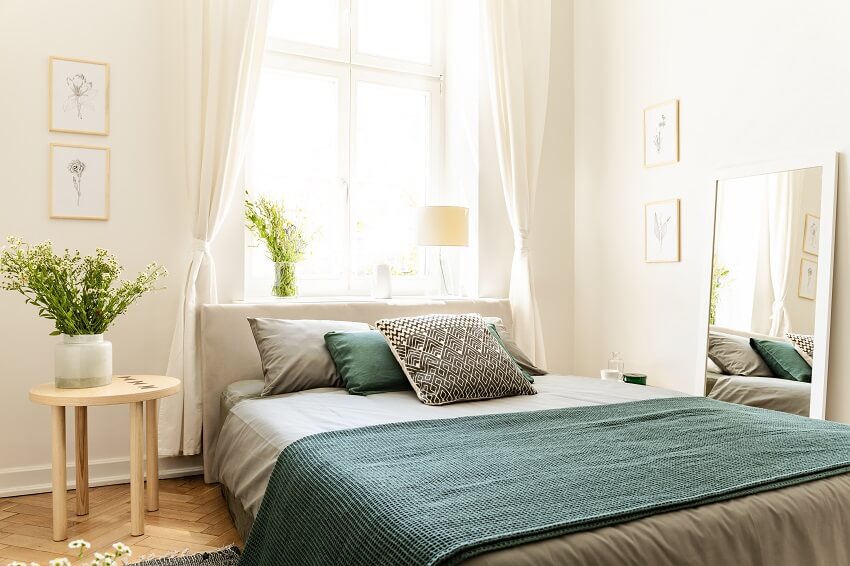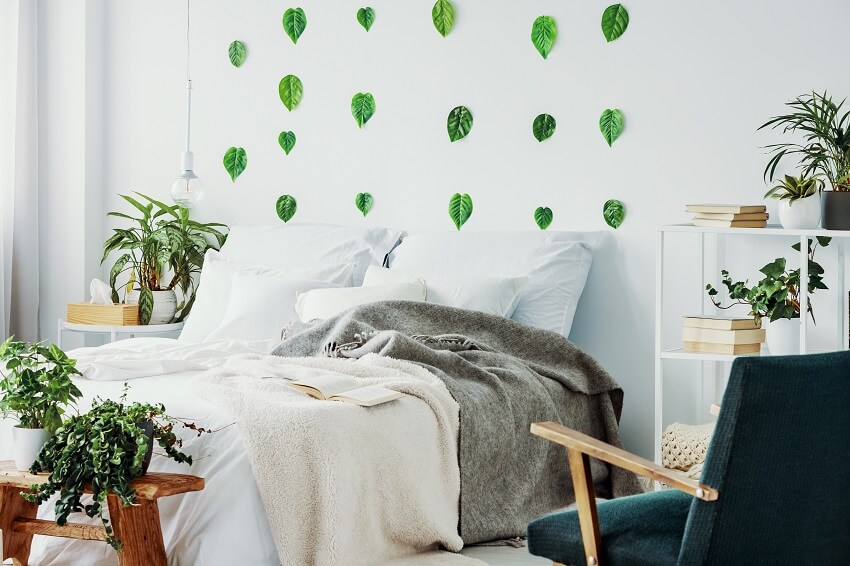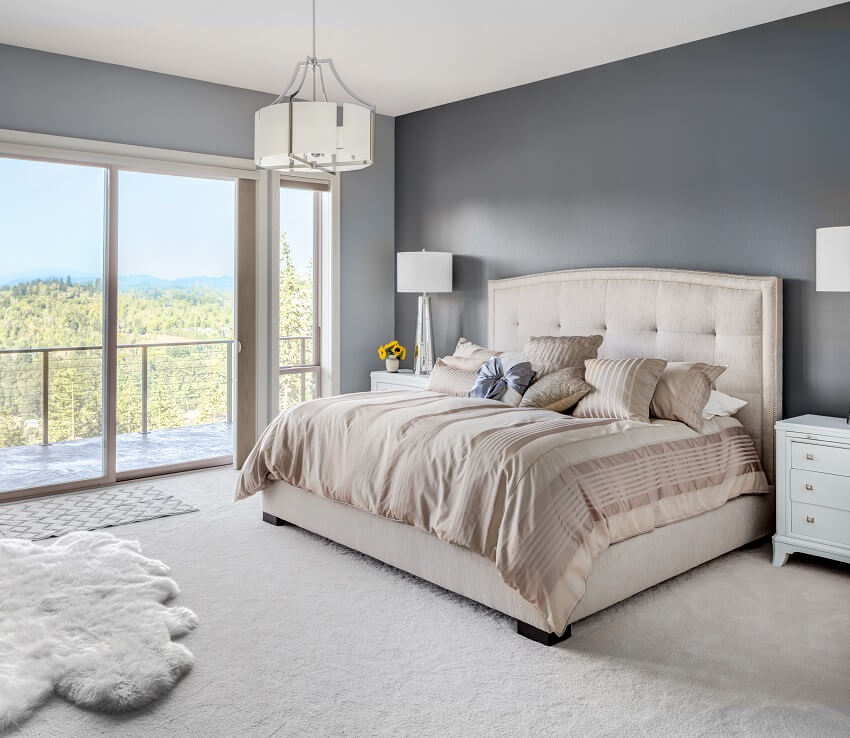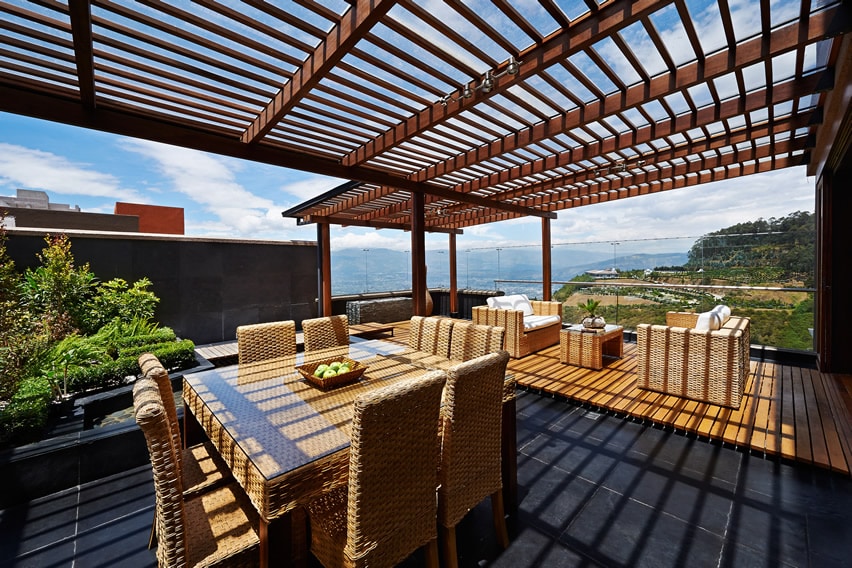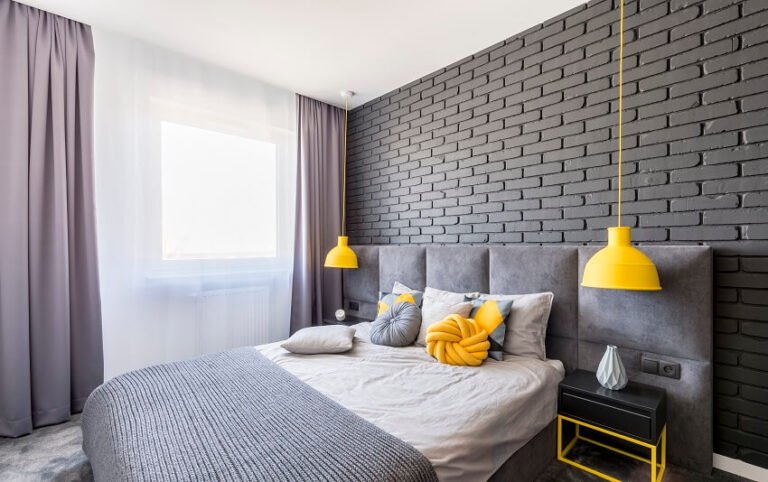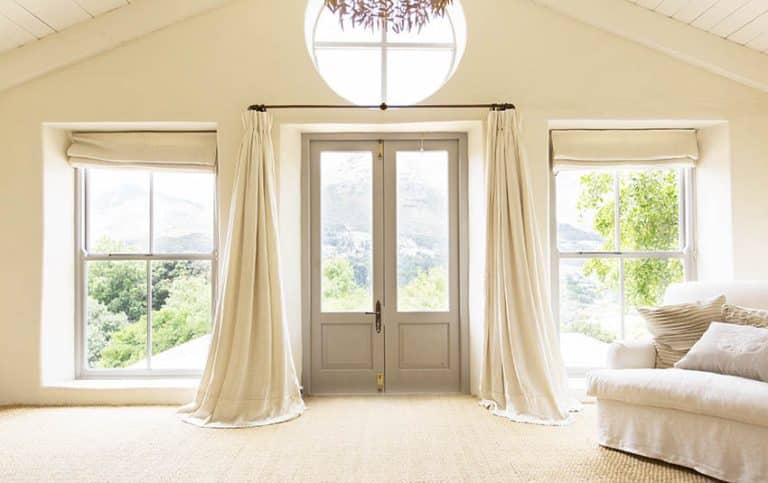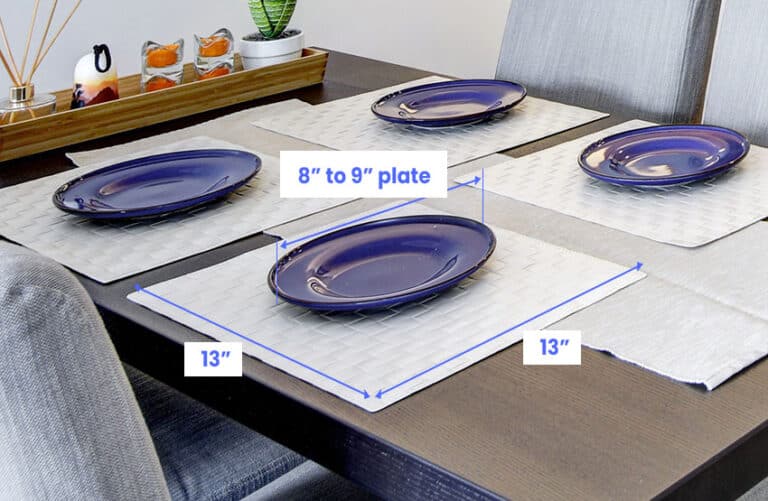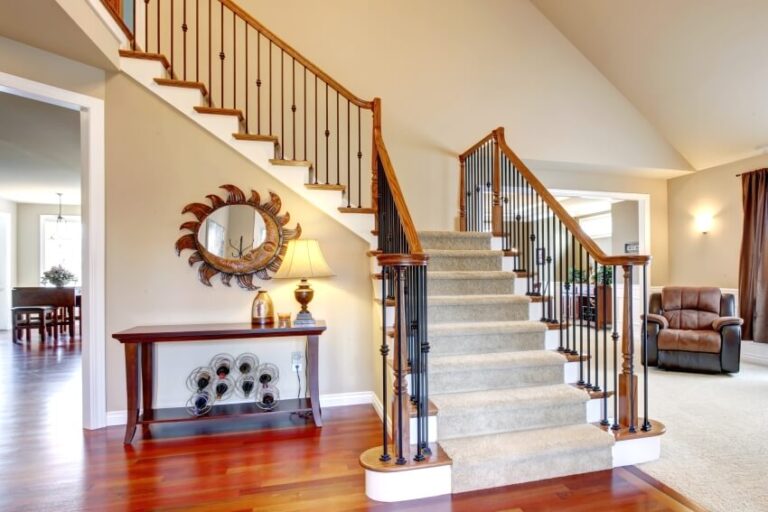20 Types of Blankets With Pros and Cons & Materials
Blankets will never be absent inside the bedroom and are sometimes even present in living rooms. Blankets are essential as they are a great shield against low-temperature rooms and are used to increase our comfort and relaxation. But, with all the different designs, styles, colors, and materials available, it might be difficult to choose the right types of blankets for you. Each blanket differs in comfort, thickness, texture, and pros and cons. How can you identify the right one that will suit your needs and preferences? In this article, we have gathered the most well-known types of blankets.
Types Of Blanket Styles
Each blanket style has its own advantages and disadvantages, and below is the list of the different types to consider.
Comforter
A comforter is one of the most preferred, well-known, and comfortable blanket types of all time. This type of blanket is generally made out of two huge fabric pieces that are machine-stitched together, and they are normally loaded with soft and warm material like cotton, feathers, or polyester fiberfill.
The fabric’s exterior material is normally made out of polyester or cotton to provide supplementary comfort and softness. During winter seasons, comforters are truly a great choice to keep yourself warm and comfortable. They can bring you much-needed heat whenever you need it.
Pros:
• Extremely comfortable and soft
• Highly recommended during winter seasons
• Made out of durable and professionally stitched fabrics
Cons:
• Some comforters can be heavy and hard to wash; some might need to be dry-cleaned
• Not recommended if you’re living in a place that does not experience cold temperatures
Duvet
The quality of duvets is quite similar to comforters. However, they still have several differences. The duvet is a blanket to keep you warm and is found under the duvet cover. On the other hand, the duvet cover is the comfortable shell found on top of the duvet.
Duvets are generally similar to white comforters in appearance, but they normally have ties in every four corners in order to keep them attached to their duvet cover. Moreover, they are packed with materials that help in insulation, such as cotton, polyester, or cotton.
Pros:
• Duvet covers are very easy to wash; you can use duvets even without a top sheet
• You can easily change the appearance of your main bedding just by changing the style or color of your duvet cover. Check our satin sheets guide for more options.
Cons:
• The duvet may appear loose to its duvet cover if the fit is incorrect, and the outer appearance may look misshapen and lumpy.
Quilt
A quilt is made out of three pieces of fiber. The first or top layer is normally composed of multiple fabric pieces that are embroidered together to produce an attractive design. The second layer is composed of slightly thick cotton or wool. The third layer is customarily made out of a huge piece of intertwined fabric.
The stitching that connects and secures the first and second layers of the quilt also creates a design. Compared to duvets and comforters, quilts are normally much lighter in weight. Quilt blankets are highly recommended if you are living in a place with a warmer climate. They are also much smoother and more attractive than comforters.
Pros:
• Quilts normally contain attractive design
• Perfect choice for those people who are living in a warmer climate
• Lightweight
Cons:
• The stitches are quite sensitive, so they need to be dry-cleaned. Cleaning them in a washing machine might ruin the design
• Not ideal for winter seasons
Fleece
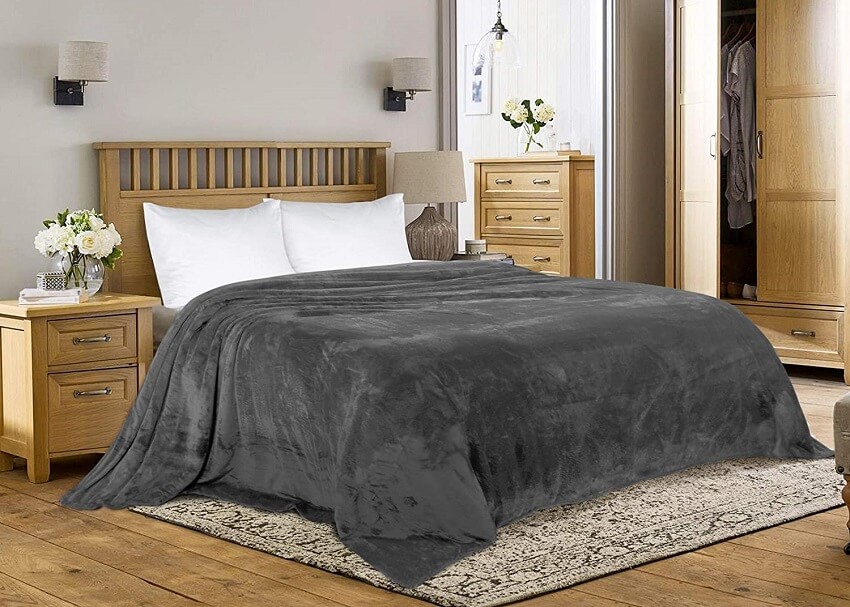
Fleece blankets are some of the most available types of blankets. You can easily find fleece blankets in the market. Normally, this type of blanket is made out of one layer of fleece fabric only, and it is generally polyester-based.
Overall, the quality of this blanket is truly soft and warm. You can use it above your bed or under its cover.
Pros:
• One of the easiest-to-find types of blanket
• Inexpensive
• Ideal for places with warm temperature
Cons:
• Not that breathable
• Not that ideal for very low-temperature areas
Cotton
As the name states, cotton blankets are made from cotton fabric. This blanket type is a popular choice for keeping young children and babies warm.
Cotton fabric is also a great choice for people dealing with sensitive skin because cotton is indeed hypoallergenic.
Cotton is also a popular choice because of its comforting and relaxing feeling. It can be used for winter seasons, but it’s recommended to layer them with a bed cover to add extra warmth.
Pros:
• Hypoallergenic; ideal for babies and people with sensitive skin
• Very comfortable
Cons:
• Since cotton is highly breathable, it might not keep you warm by itself during cold weather
Acrylic
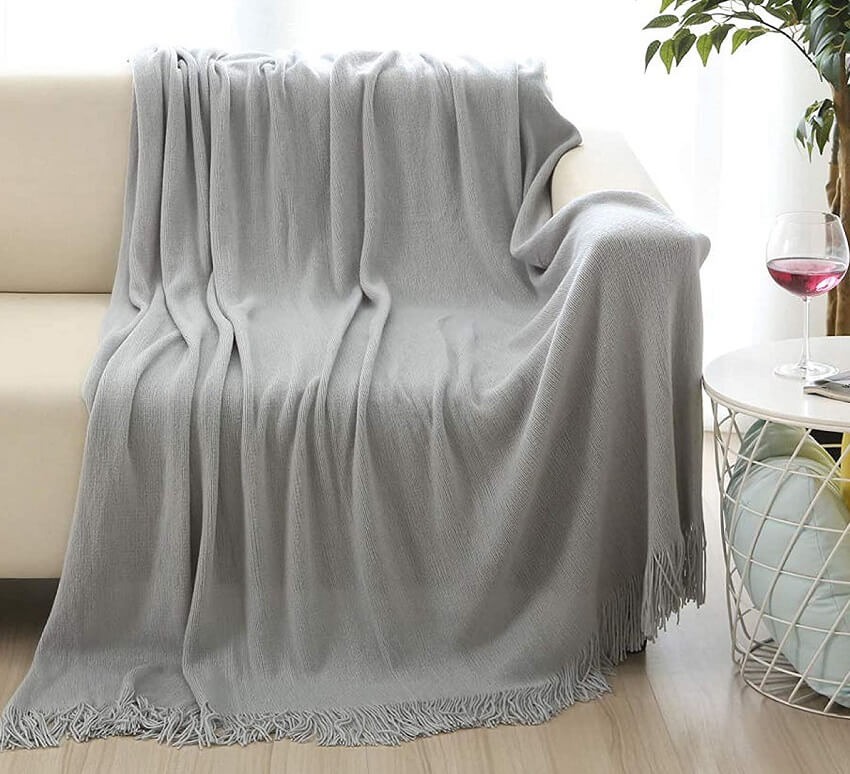
Acrylic-made blankets are normally warm, hypoallergenic, and lightweight as well. They can give a very comfortable feeling and they are very easy to maintain.
Moreover, acrylic blankets are easy to wash. They are safe to be cleaned using a washing machine. You won’t have to worry about getting its color faded after numerous washings.
Pros:
• Hypoallergenic and warm
• Very easy to maintain
• Safe to be cleaned in a washing machine
Cons:
• Just like cotton, acrylic blankets are highly breathable, so they might not keep you warm that well
Rayon
Rayon-made blankets are easy to wash, and they dry quickly as well. However, since rayon is generally made out of bamboo or beech trees, the material it may give isn’t that soft compared to other materials, such as cotton and acrylic.
Pros:
• Very easy to wash
• Quickly dries after washing
• Made out of natural materials
Cons:
• Not that soft and comfortable
Microfiber
Indeed, microfiber blankets are soft and relaxing. Microfiber is an excellent material choice for blankets and bedding sheets. Microfiber blankets are very well-insulated, easy to maintain, and affordable.
This type of blanket is a great selection to keep you warm during chilly nights. However, microfiber is not that thick compared to duvets and comforters, so they may not give the warmth you need when you’re in a very low-temperature area.
Pros:
• Very soft and relaxing
• Well-insulated and easy to maintain
• Affordable
Cons:
• Not that effective in terms of keeping you warm in a low-temperature area
Down
Down is a material used to fill blankets such as comforters and duvets. Down refers to quill-free feathers from particular birds, such as geese and ducks.
Moreover, the feathers that come from these birds are naturally designed and created to give you much-needed heat. Down materials are very warm, lightweight, and snugly.
Although downs are normally used to fill comforters and duvets, some blankets are purely made out of down only. Down blankets are very soft, comforting, and easy to wash, but they are thinner than comforters.
Pros:
• Ideal for warm climate; can make you warm without causing you to sweat
• Very soft and relaxing; easy to wash
Cons:
• Not ideal during winter
• People who are allergic to feathers may not find this blanket type a safe option
Wool
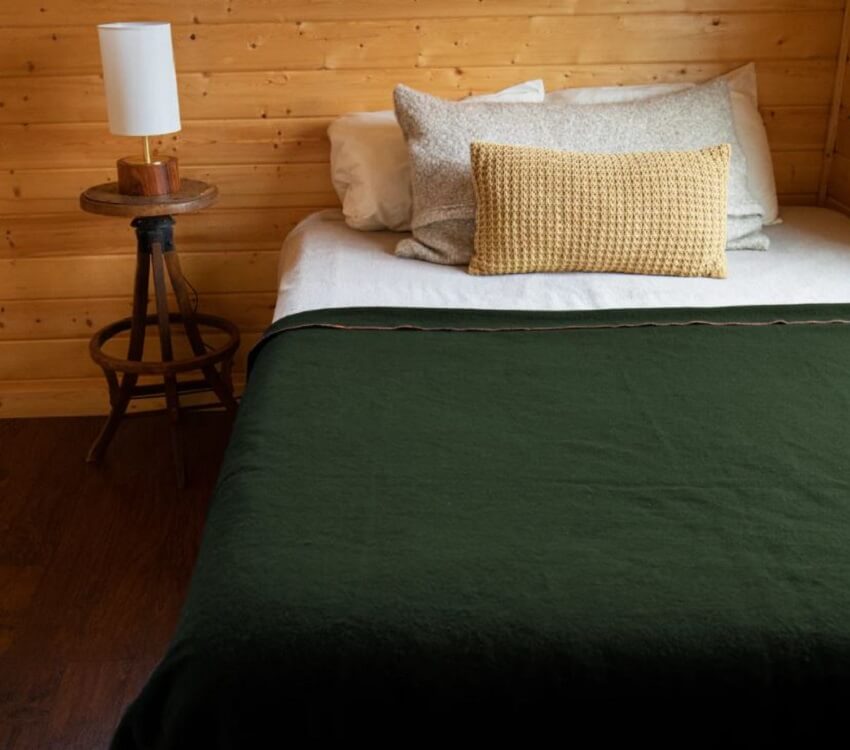
Wool has also been a well-known selection for blankets. Wool blankets are quite breathable as they have small air pockets located within the fibers.
This type of blanket is very well-insulated. It is very ideal for places that aren’t that cold but not hot as well. A wool blanket can either be knitted or woven.
Pros:
• An ideal choice for camping; good enough to keep you warm during a chilly night
• Can function as a great bed cover
Cons:
• Wool materials are generally itchy and uncomfortable; not ideal for people with sensitive skin
Bamboo
Bamboo blankets are very effective in maintaining the regulation of your body heat. This type of blanket is highly absorbent.
It helps keep warm air in your body as they are trapped in the bamboo fibers. Furthermore, bamboo blankets are incredibly antibacterial and do not hold bacterial elements that cause odors.
Pros:
• Long-lasting and highly absorbent
• Keeps your body warm; odor-resistant and antibacterial
Cons:
• Difficult to dry; cannot be dried in a machine
Shearling
This type of blanket material is sheepskin and was processed and tanned with the wool connected to the skin. Shearling blankets are normally furry to provide more warmth and breathability.
It is indeed safe for people who are dealing with allergies as they are hypoallergenic. With proper maintenance, shearling blankets will soften as time goes by.
Pros:
• Antibacterial, odor-free, and hypoallergenic
• Very comfortable; keeps you very warm in low-temperature areas
Cons:
• A bit difficult to wash as it becomes heavier when wet
Throw
This type of blanket is mainly designed for decorative purposes. It is generally used to cover the back of a couch. Throw blankets are usually small and are made out of a single fabric. They normally have bright and warm colors.
Throw blankets are generally knitted or woven; some can be made from fleece materials.
Pros:
• Can be used to improve the look of your bed or couch
Cons:
• Small; not suitable to be used as your main blanket
Chenille
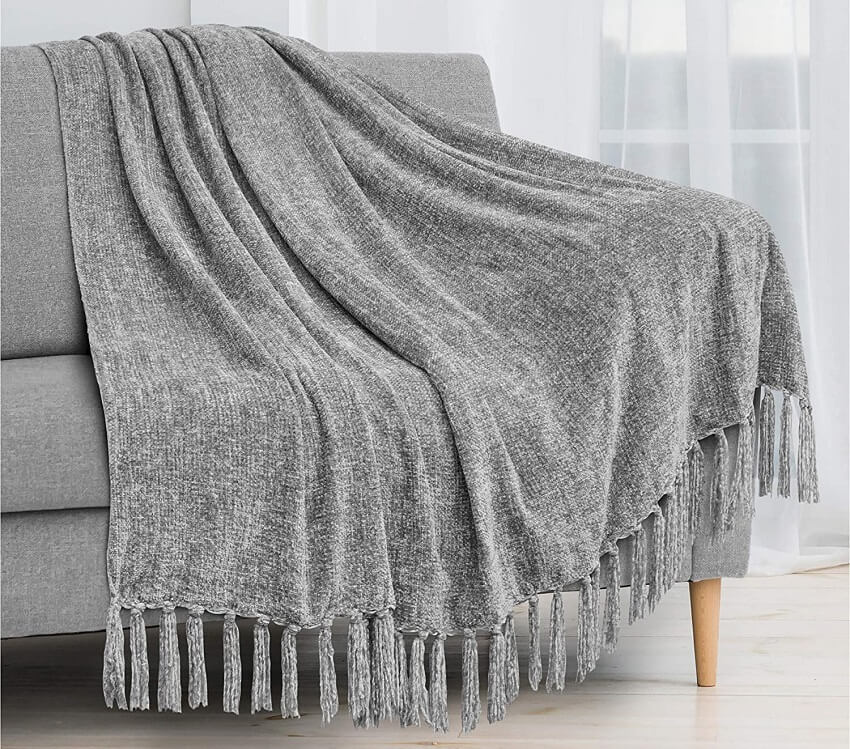
Chenille means caterpillar in French. Chenille blankets are very soft, and their surface is very dense. They are frequently used for decorative purposes as well.
Normally, chenille blankets are made from rayon, cotton, or acrylic materials. This type of blanket was indeed popular way back in the 1940s and 1950s, and it is merely for revamping the appearance of a particular room.
Pros:
• Very soft; ideal for decorating rooms
• Very warm; cotton-made chenille blankets are hypoallergenic
Cons:
• Very delicate; you can only clean it through dry-cleaning
• Won’t last long if not properly maintained
Knit
Knitted blankets are available in various styles and designs. Generally, they are made out of one layer of textured and high-quality knitted fabric. This type of blanket is normally composed of various materials such as acrylic, wool, or cotton.
Knitted blankets can be large enough to cover a king-size bed, but some are small enough to cover sofas.
The edges of a knitted blanket are usually finished with fringes to achieve a more attractive and textured appearance. Read more about standard and popular bed sizes here.
Pros
• This type of blanket comes in a wide variety of designs
• Great for decorative purposes
Cons:
• Can easily tear; not recommended if you have dogs or cats in your house
Vellux
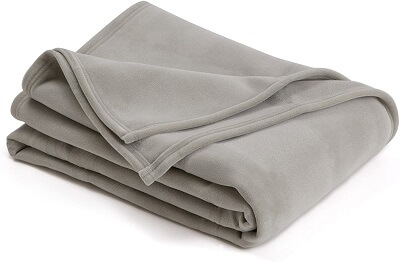
This type of blanket is composed of two layers of polyurethane foam that are bonded with very soft nylon fibers. Vellux blankets are indeed warm and long-lasting.
Vellux material can be easily washed in your washing machine multiple times without shrinking or piling. They are great enough to keep you warm, but it’s still recommended to use a comforter above it for added warmth.
Pros:
• Very durable and long-lasting
• Safe to be used in a washing machine
• Very warm
Cons:
• Not that breathable and environment-friendly
Waffle Weave
As the appellation suggests, waffle-weave blankets resemble waffles. This type of blanket is made out of a single fabric layer—the small pockets of waffle weave fabric used in this blanket help trap air. The fabric is a good choice since it is lightweight yet very warm.
Pros:
• This blanket is normally made out of cotton, which means they are usually hypoallergenic
• It provides sufficient warmth
Cons:
• It only works best when layered underneath a comforter
Weighted Blankets
Weighted blankets, like comforters, are often used during the winter season. They are very warm, cozy, and soft.
Weighted blankets are a reliable option for improving sleep quality and soothing stress and anxiety.
Pros:
• A perfect option during the winter seasons
• Very warm, cozy, and soft
Cons:
• Can be hard to wash; very heavy when wet
Mexican Mercado
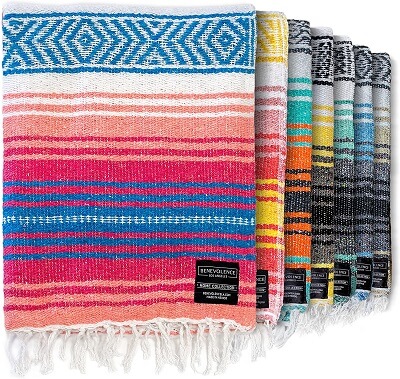
Mexican Mercado blankets are typically handwoven. They are multi-layered, and some are made of two to three layers of fiber or fabric. The design of this type of blanket is normally based on traditional Mexican designs. It is indeed soft, warm, thick, and breathable.
However, Mexican Mercado blankets aren’t for resting or sleeping purposes; they’re generally used to be included in an outfit.
Pros:
• Warm, thick, and breathable
Cons:
• Normally, the Mexican Mercado does not function as a primary blanket. It is commonly used as an outfit
Sherpa Blanket
This type of blanket uses a very lightweight and unique synthetic material with two sides. The outer part is usually made of smooth and soft-woven fabric, while the inner part is made of very comfortable and soft fleece material.
A Sherpa blanket is an excellent option to keep you warm during chilly nights and cold weather.
Pros:
• Lightweight yet warm
• Very comfortable and soft
• Ideal option to keep you warm during a cold weather
Cons:
• It may wear down after numerous washings
Blanket Materials
Here are the materials that are customarily used to create blankets:
• Cotton. Cotton-made blankets are indeed the softest of all fabrics. They are also hypoallergenic, breathable, and soft.
• Acrylic. This material is soft, safe for washing machine-cleaning, warm, and lightweight. The color of an acrylic-made blanket does not fade even after numerous washes.
• Polyester. Polyester is very affordable, long-lasting, and quick-drying. It does not lose its color or form over time.
• Mink. Mink typically means ‘fur,’ but it isn’t literally made out of fur. It also resembles animal fur for added comfort and warmth. Mink blankets are generally soft and plush.
• Fleece. This material is one of the most widely used blanket materials. It is lightweight, soft, and easy to clean and dry.
• Wool. This material is one of the most health-wise options. It is durable, warm, and hypoallergenic as well.
What Are The Most Comfortable Blankets?
Comforters, duvets, cotton, acrylic, shearling, and Vellux blankets are the most comfortable blankets that can truly give you excellent sleep quality.
Cotton and acrylic-made blankets are soft and comfortable, but they are not that effective in keeping you warm during winter.
Which Blanket Is The Warmest?
Comforters and shearling are some of the blankets that can give you the warmest feeling ever. Even in very cold temperatures, these two types of blankets are quite excellent when it comes to keeping your body in its much-needed warmth and heat.
Which Blanket Is The Best?
Comforters are the best option for maximum comfort, relaxation, and warmth. There are a lot of reasons why comforters are simply the best and the most popular option. This type of blanket is reliable in giving you high-quality rest and sleep. If you live in a place that experiences winter every year, comforters are undoubtedly the best option.
However, some comforters may not be a great choice for sensitive skin because some are filled with down feathers. If this is the case, comforters may not be the best option for you.
So, if you’re dealing with sensitive skin, it is highly recommended to consider blankets made out of pure cotton. Cotton-made blankets are very comfortable, soft, and breathable. And above all, cotton is truly hypoallergenic. This means it is a very safe and suitable option for everyone.
For more related articles like this, read our ultimate guide to different types of bed sheets.

